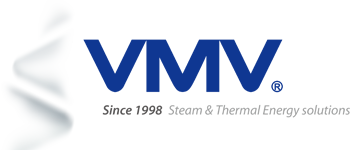Pipeline Strainers are used in industrial applications to capture and remove impurities from pipelines. They work by intercepting process fluids flowing through perforated plates or screens. In industrial pipelines, these perforated plates or screens are called Strainers.
Strainer Function
Equipment Protection: They intercept solid impurities such as rust and sand, preventing them from entering downstream equipment (such as pumps, valves, heat exchangers, nozzles, flow meters, etc.). This prevents equipment from clogging, wear, or damage caused by impurities, extending equipment life and reducing maintenance costs and frequency.
Ensuring Stable System Operation: By Strainering impurities, they maintain the purity of the media in the pipeline, ensuring smooth fluid flow, maintaining stable pressure and flow, and minimizing system failures and fluctuations caused by impurities, ensuring the normal and stable operation of the entire pipeline system.
Improving Product Quality: In some production processes requiring high media purity, Strainers can remove impurities from the media, ensuring product quality and meeting production process requirements. For example, in industries such as food and pharmaceuticals, they prevent impurities from affecting product quality.
Reducing Energy Consumption: Impurities in pipelines increase fluid flow resistance, leading to increased energy consumption. After removing impurities, Strainers can reduce this resistance and lower energy consumption.
There are two common types of Strainers: Basket Strainers and Y-type Strainers. Let’s take a look at the differences between them.
Structural Differences
Basket Strainers
Look like a cylinder, with a basket-shaped Strainer screen inside. They can hold a large amount of impurities. They typically consist of a pipe, a cylinder, a Strainer basket, and a flange. Their structure is relatively complex and large.
Featuring a simple and compact “Y”-shaped design, they consist of a housing, a Strainer screen, and a seal. They are lightweight and can be installed horizontally or vertically. They accommodate a full range of diameters from DN15 to DN600.
Performance Differences
Filtration Capacity
Basket Strainers have a larger Strainer area, intercepting more impurities and are suitable for applications with high flow rates and high impurity content. Y-type Strainers have a smaller Strainer area and are suitable for fine filtration, but are prone to clogging when handling high impurity concentrations.
Maintenance
Basket Strainers can be cleaned online by opening the flange cover and removing the Strainer basket without stopping the machine. Y-type Strainers require stopping the machine to remove the Strainer screen for cleaning, which may affect continuous production. Pressure Drop and Energy Consumption
The Y-type design features a streamlined flow path, resulting in low pressure drop (approximately ≤0.02 MPa for DN100) and low energy consumption. Basket Strainers have a relatively higher pressure drop (approximately 0.05 MPa under the same operating conditions).
Applicable Applications
Basket Strainers are widely used in large-scale piping systems containing large amounts of impurities, such as in the chemical, petroleum, and water treatment industries. They are particularly well-suited for continuous production and high-flow applications.
Y-type Strainers are commonly used upstream of equipment such as compressors, pumps, and valves to protect them from impurities. They are suitable for smaller piping systems, low-flow applications, or cost-sensitive applications.
In short, Basket Strainers are suitable for high-flow, high-impregnation applications, while Y-type Strainers are known for their compact size, low energy consumption, and ease of maintenance. Maintenance Methods for Strainers in Piping Systems
Maintenance methods for Strainers in valve piping systems are as follows:
Daily Operation Monitoring
• Operating Parameter Monitoring: Regularly record the inlet and outlet pressures. When the pressure differential exceeds the initial value by 0.05-0.1 MPa, check the Strainer element for blockage or compacted Strainer media. Perform a backwash or replace the Strainer element promptly. Ensure that the operating flow rate does not exceed the design value and that the temperature is within the tolerance range of the Strainer material.
• Operating Condition Observation: Check that the Strainer’s bottom drain is functioning properly, especially in winter. If the drain is malfunctioning, remove it, clean it with a neutral detergent, and then reinstall it. Always monitor the Strainer element for damage, leakage, or secondary contamination caused by Strainer media powder or fibers. Replace immediately if any.
Regular Maintenance
• Cleaning Impurities: After the Strainer has been operating for a period of time, the pressure drop increases and the flow rate decreases. Impurities within the Strainer must be removed promptly. For coarse Strainers, ensure that the stainless steel mesh on the Strainer element is not deformed or damaged. The Strainer element of fine Strainers must also be free of deformation or damage. Some fine Strainer elements cannot be reused repeatedly. If deformed or damaged, replace them immediately.
• Backwashing: Start the backwash pump and control the backwash flow rate to 2 to 3 times the filtration rate for at least 5 minutes to remove impurities trapped on the media surface and restore filtration performance. Be careful to avoid sudden high-pressure impact on the Strainer bed. Use a precisely controlled backwash valve to gradually increase the water flow.
• Check and Replace Strainer Media: Regularly inspect Strainer media such as quartz sand and anthracite for contamination and wear. If contamination is severe, filtration efficiency is significantly reduced, or wear is severe, they should be replaced promptly. When replacing, ensure the media is filled in the correct order and proportion to maintain a stable layered structure. Drain any accumulated water inside the Strainer before replacement.
• Equipment Leakage Inspection: Regularly inspect all sealing parts and associated valves for leaks. If any leaks are detected, promptly identify the source and cause and repair them to prevent media leakage and water contamination.
• Surface Cleaning: Use clean water or an appropriate detergent to remove dirt and debris from the equipment surface, maintaining a clean appearance. The nameplate on the valve Strainer should also be cleaned to ensure legibility.
The above is information shared about Basket Strainers and Y-type Strainers. If you need to purchase Strainers, please contact us. Newton will provide you with high-quality Strainers.

